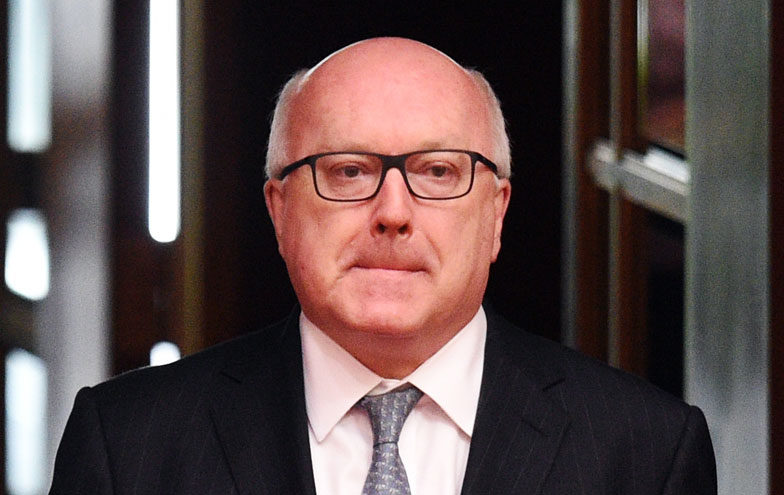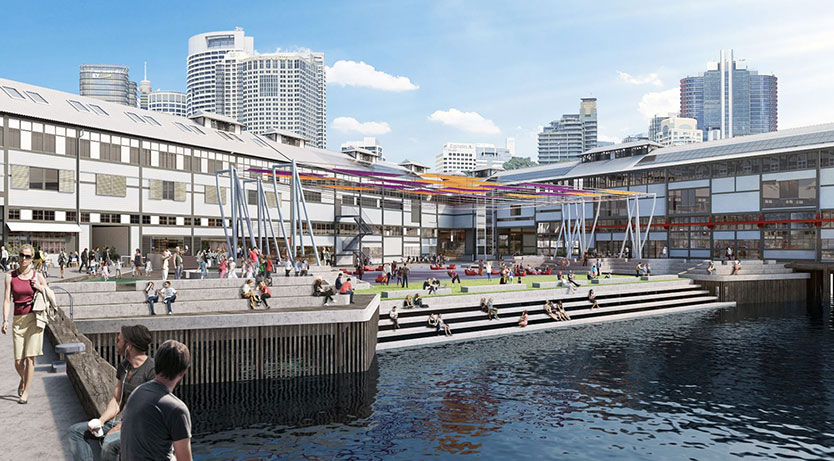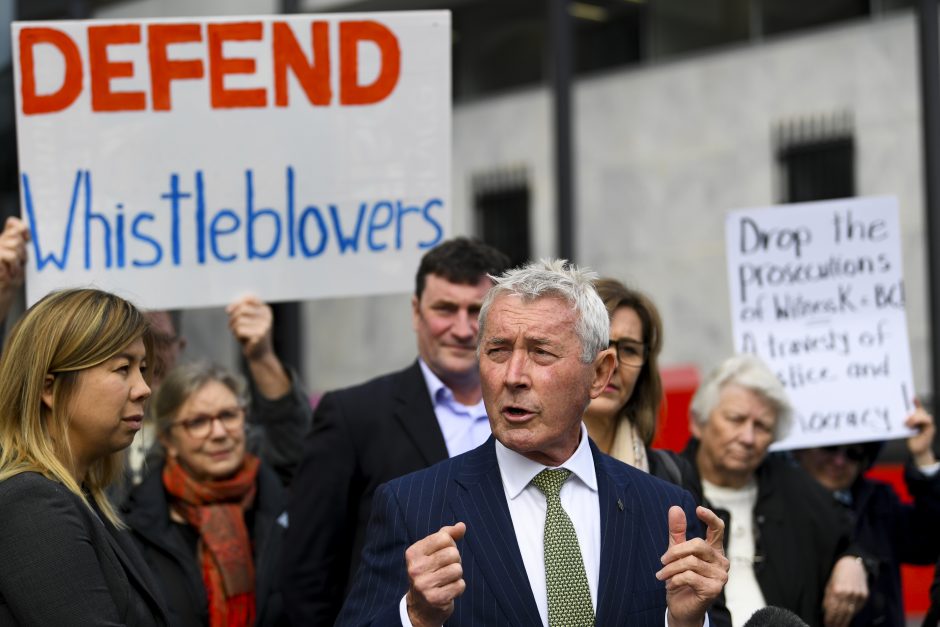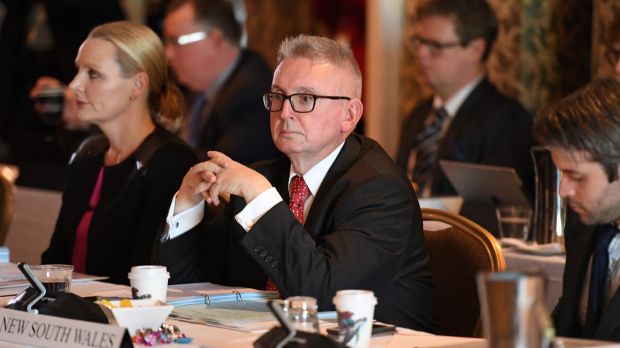Arm’s length funding of the arts is the hallmark of a government attempting to work in the interests of the people. It prevents the arts being used as a political football, and together with peer assessment fosters the development of creativity. It was the founding principle in 1946 of the Arts Council of Great Britain, created by economist John Maynard Keynes and the Attlee Labour government, but came under sustained attack by the government of Margaret Thatcher (1979 to 1990).
It was also the basis of the funding model for the Australia Council developed by the Whitlam government in 1973. The Council’s website still proclaims: “Peer assessment and arm’s length funding have been guiding principles of how the Australia Council allocates funding for more than 40 years.”

Former federal arts minister George Brandis
In the past six years Coalition governments have persistently undermined those principles. In 2015 federal arts minister George Brandis notoriously diverted $105 million in funding to a ministerially-controlled slush fund known as Catalyst. It caused such uproar that within two years the Turnbull government was forced to abolish Catalyst and restore some of the funds.
But that didn’t stop the attacks. Brandis’s successor Mitch Fifield cut a further $5.4 million in 2018, diverting the money to a corporate “Creative Partnerships” project over which he had direct control. Labor, the Greens and the National Association for the Visual Arts (NAVA) all condemned the decision. (Council of Australasian Museum Directors website, 3 January 2018)
The cuts known as “efficiency dividends”, which have impacted core functions of national cultural institutions, have also bitten deep at the Council, leaving its overall funding at least 12% down and removing funding from entities as various as the magazine Overland (Overland website, 16 August 2019) and independent Melbourne company Theatre Works (Sydney Morning Herald, 14 August 2019). Destabilisation of the agency is progressively eroding its ability to carry out its long-term strategic functions.
The arm’s length principle in arts funding is supposed to apply at State level, too. But in NSW, the Coalition government has abrogated the principle in ways that might make even George Brandis blush.
Don Harwin’s arts fiefdom
Premier Berejikian’s arts minister Don Harwin (pictured top of page) is logging up an extraordinary record of political interference in the arts by executive government.
- Lisa Havilah, appointed director of the Powerhouse Museum in November 2018, is obliged to report directly to Harwin – an unprecedented move, overturning the long-established relationship between government, statutory board and management.
- He has contemptuously ignored the meticulous Upper House Inquiry report into the removal of the Powerhouse from Ultimo – see my blog of 18 July and reports on the Powerhouse Museum Alliance website. Related deals with developers at both Ultimo and Parramatta remain shrouded in secrecy.
- In 2018 he bypassed the independent panel’s recommendations for the Arts and Cultural Development program and diverted $1 million to Sydney Symphony Orchestra, de-funding 11 smaller organisations (ABC News, 26 September 2018).
- Harwin has replaced peer assessment boards for arts grants from the same program with “art form boards” directly responsible to him, ignoring protests from the National Association for the Visual Arts (NAVA statement, 18 June 2019).
- In August 2019 he unilaterally opened funding for the same program, which is supposed to foster the arts in NSW, to companies from elsewhere, prompting Labor shadow treasurer and arts spokesman Walt Secord to say he was setting up a “Hunger Games situation” for artists (Sydney Morning Herald, 22 August 2019). Regional companies are among those certain to suffer.
- He has allowed Destination NSW, the much-criticised government tourism body, to demand free tickets and corporate hospitality in return for funding festival events and international exhibitions at the Art Gallery of NSW (The Sun-Herald 18 August 2019).
- He has also allowed Destination NSW CEO Sandra Chipchase (salary some half a million dollars) to question the programming of a Yoko Ono exhibition at the Museum of Contemporary Art (The Art Newspaper, 21 August 2019).
Minister Harwin appears to regard his arts portfolio as a sub-branch of the Liberal Party, and every cultural institution as a venue for networking with the big end of town.

Walsh Bay arts precinct – unfinished, leaving key organisations homeless
Meanwhile the government’s much-vaunted “cultural infrastructure” fund is delivering nothing of benefit to the people of NSW. The Walsh Bay development is stalled, leaving the Australian Theatre for Young People, the Australian Chamber Orchestra and the Bell Shakespeare Company without a home. The stoush with Liberal-favoured developer Lendlease has left the Sydney Modern Project at the Art Gallery of NSW in limbo, and in Parramatta we have yet to see plans for a new museum fit to accommodate the world-class Powerhouse collection.
Labor and the arts
Opposition spokesman Walt Secord has described the program as “a total mess”. When the report of the Inquiry into Museums and Galleries was briefly discussed in the Upper House on 7 and 8 August, he joined Inquiry chair Robert Borsak (Shooters and Fishers) and committee member David Shoebridge (Greens) in criticising the minister’s response. “The arts have lurched from crisis to crisis under this Minister and this Government,” he said (Hansard, 8 May).
But Labor has to look critically at its own history if it is ever to regain the high ground of the Whitlam era in arts policy. It needs to go back to the fundamental principle of arm’s length funding.
Shortly after the 2013 election of the Abbott government, Flinders University strategic arts professor Julian Meyrick gave a prescient warning about the need for the Australia Council to hold firm on that principle. Since 1973, he wrote, “ministers of all political hues have often pursued policy objectives without due regard for the agency’s statutory independence.” (The Conversation website, March 18, 2014). From Hawke to Gillard, Labor administrations played a part in bringing the Council under greater governmental control. And he warned against elevating corporate support for the arts to control by a silvertail elite.
“The Council is more than a government piggy-bank,” he continued. “It is a living symbol of the accord between the Australian people and Australian artists, a guarantee of free speech in the cultural arena.”

Lawyer Bernard Collaery with supporters
Advocacy for the arts involves advocacy for free speech. For the Opposition to be a true voice for the people, it must end its supine “bipartisan” support for the erosion of civil liberties, and expose the dirty linen of governments which is covered up at federal level by claims of “national security”, and at State level by “Cabinet confidentiality”.
In an outstanding Four Corners program aired on the ABC on 26 August, lawyer Bernard Collaery, prosecuted in the ACT Supreme Court for acting for whistleblower Witness K, issued a reminder to secretive governments:
“We live in a country that understands the boomerang,” he said.
It’s a notion that should give heart to arts supporters.
Founding principles
“We look forward to a time when the theatre and the concert-hall and the gallery will be a living element in everyone’s upbringing… How satisfactory it would be if different parts of this country would again walk their several ways as they once did and learn to develop something different from their neighbours and characteristic of themselves. Nothing can be more damaging than the excessive prestige of metropolitan standards and fashions… The task of an official body is not to teach or to censor, but to give courage, confidence and opportunity.” – John Maynard Keynes, 1946





Thanks Judith for this excellent analysis of NSW State Government arts funding policies, the strangle-hold the NSW Arts Minister currently has on arts projects and institutions, and how not only arts funding is being compromised, but also how even arts premises’ are being misused to fulfil non-arts objectives. Your article is an excellent call for those of us concerned about these trends and decisions to become active in challenging them, in the interests of a vibrant arts culture in NSW into the future.
Art is Dangerous: The only force which frightens insular governments, is all forms of Art when Art is employed to illustrate and high light Political bastardy and Corporate Skullduggery. Arts funding, by it’s very function, inhibits most artists across the board from ‘biting the hand that feeds’! This form of control of the various narratives assures Governments and their crony corporate collaborators that the political potential of challenging Art works will never interfere with the business of money-making, regardless of it’s effects on our environment and the stifling of vigorous social growth. I have long believed that our Artists, Poets, Writers, Musicians and Film-makers are our New Age Healers, our Spiritual Warriors and Goddesses, provided we can pull our heads out of “productivity” and get back to Principles.
Spot on comment from a fearless cultural warrior. Thanks, Tony!